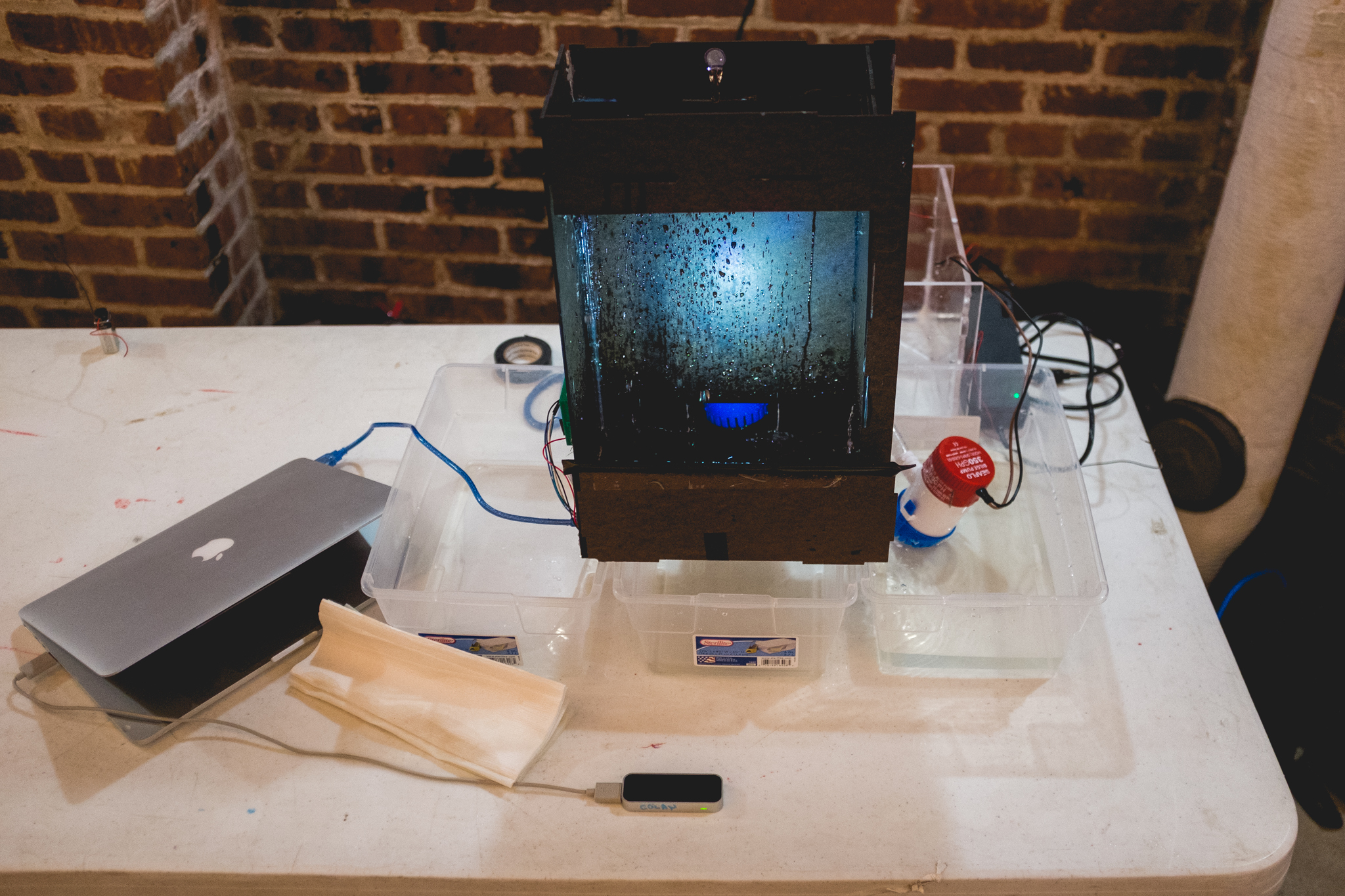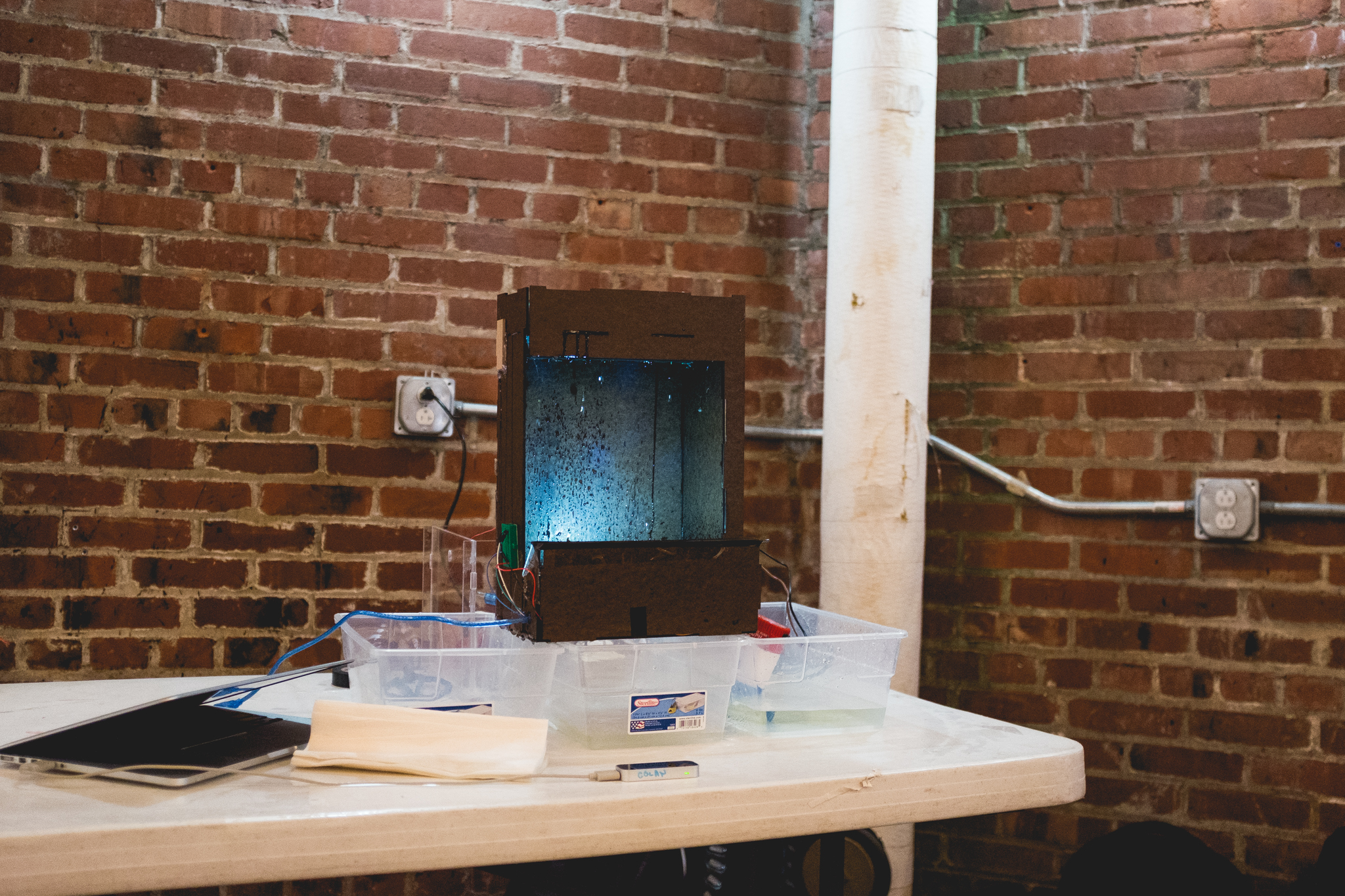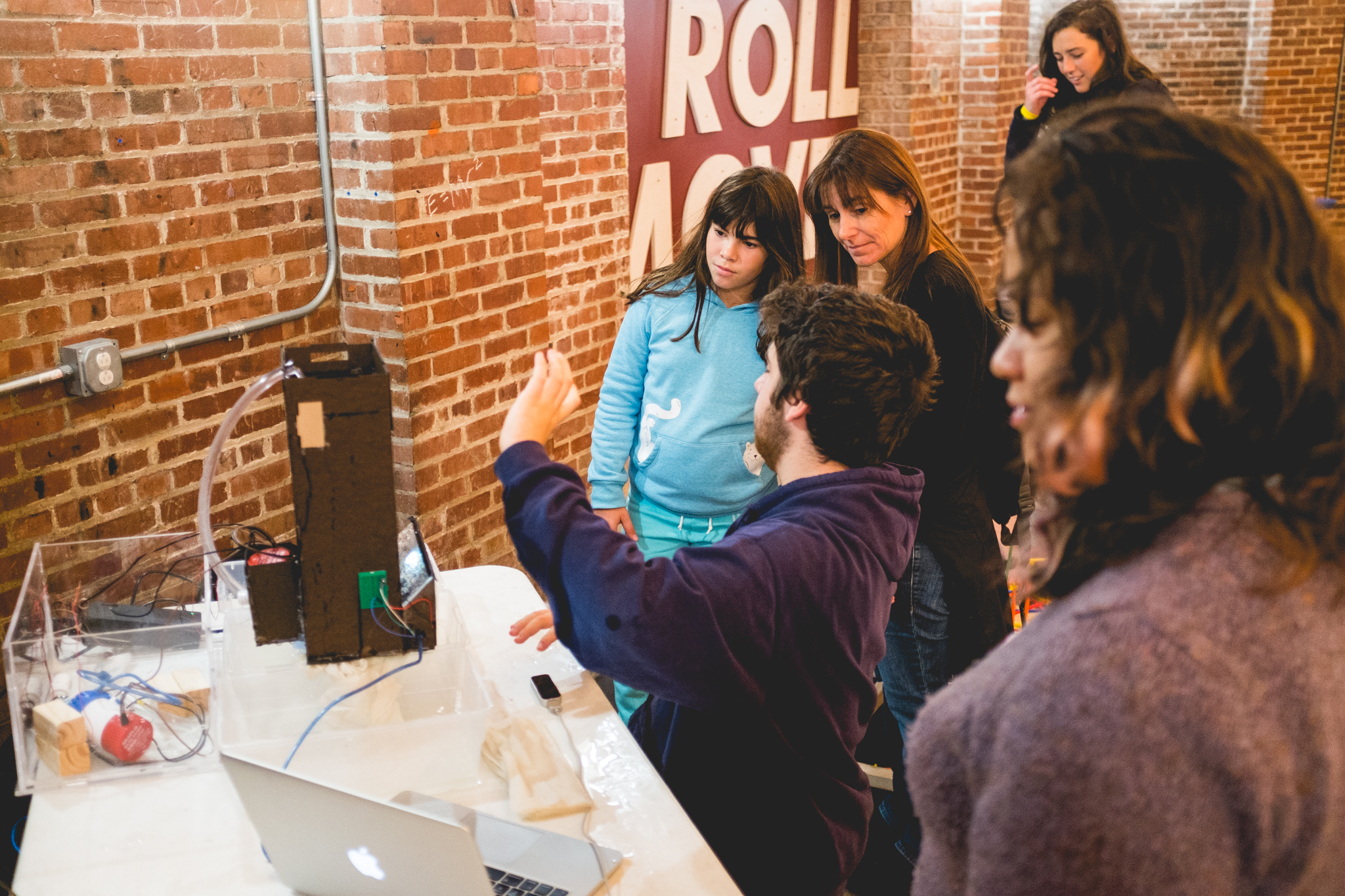This was our third prototype, in which we attempted to again produce a steady drip rate and match the strobe to the drip rate. To achieve the drip rate, we attempted to use gravity and a constant water pressure and constant diaphragm size. Our prior prototypes helped us understand how to stabilize water pressure, what size diaphragm to use, and the amount of water pressure to use.
However, there were variables that we couldn’t control, such as the surface tension of the water leaving the vessel. When trying to have an incredibly precise drip rate (60 drips per second), these factors are a deal breaker.
[showcase slowmo video]
When we went to the Children’s Museum, we learned several things:
- The apparatus should have more visual pop to interest the children.
- The apparatus should have more visual cues/ affordances
- The apparatus could be much bigger
- The location for the apparatus should be more carefully picked
- Children want to touch the water
Technically:
- We need much brighter strobes, or a much dimmer environment
- We need that steady drip rate
- We need a better waterproof housing
Moving forward, we want to invest in much brighter strobe lights that will allow for visibility in the museum environment. Also, we want to research and apply some more hydroponics methods, that use pumps as the pressure regulator rather than gravity and diaphragm. I hope this will solve our problem, as there will be more control. The plan is to start with one steady drip, and work up from there if we have enough time. I want to spend time making the visual appeal strong, with graphics, sound, or ambient color. We also plan to go to set up at the hallway, where it will be darker. We will use a Raspberry Pi instead of a computer, and build a housing for the Leap Motion Controller.



Leave a Reply
You must be logged in to post a comment.